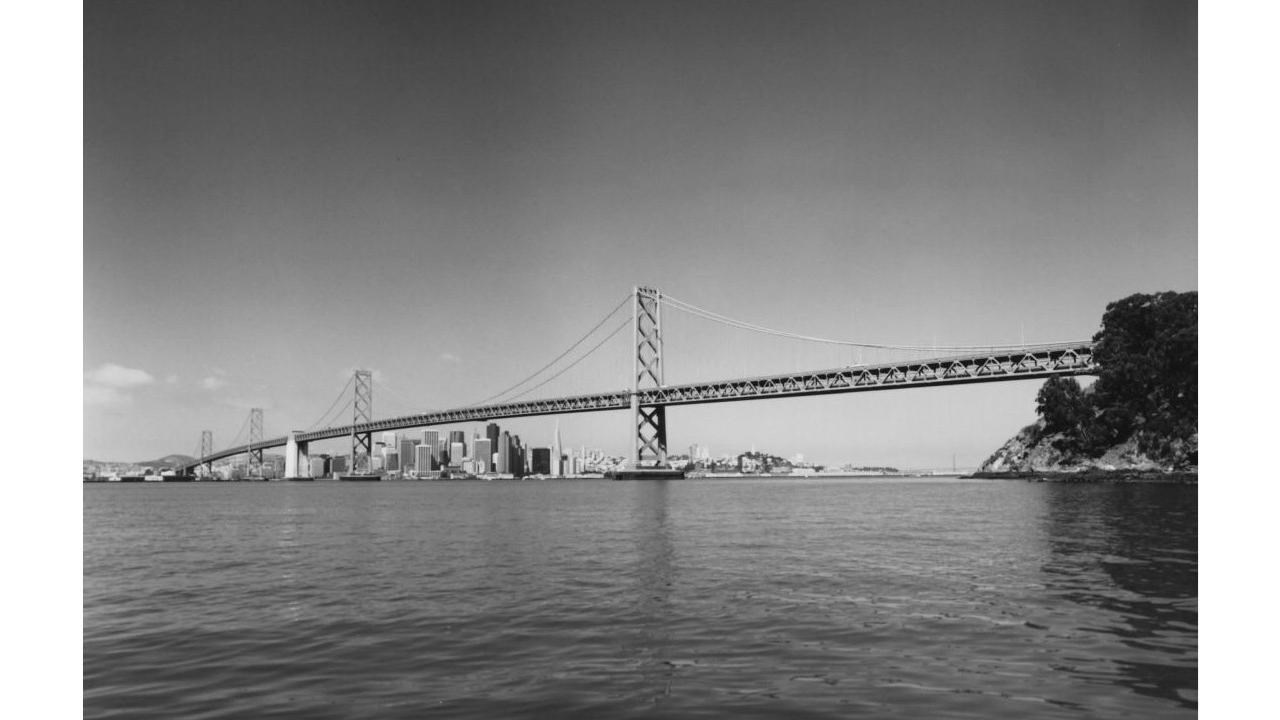Last updated: July 22, 2021
Place
San Francisco-Oakland Bay Bridge

Photo by Fred Benton & Frank Deras Jr., courtesy of California State Historic Preservation Office
Quick Facts
Location:
San Francisco, California
Significance:
Engineering & Architecture
Designation:
Listed in the National Register – Reference number 00000525
MANAGED BY:
Listed in the National Register of Historic Places in 2001, The San Francisco-Oakland Bay Bridge is significant for its influence in the California Bay Area. The San Francisco-Oakland Bay Bridge’s multi-modal design is a direct example of the mindset of commuters during the 1930s. Constructed in 1936, the bridge was used to support the increase of automobiles and public transit lines in the early half of the 20th century. The need for the Bay Bridge became apparent during the 1920s when the number of automobiles registrations and population increased. California in the 1920s was the forerunner in the nation leading the way for automobile use. The invention of the automobile and the successful market transformed the urban environment and embraced new construction for the evolving 20th century society.
In total the bridge is 5-miles long and consists of three different bridges and a tunnel. Due to foundational challenges and the ingenuity Charles Henry Purcell as the chief engineer on the project, the resulting design broke world records. The suspension section of the bridge is among the longest constructed in the United States. Today the record has been surpassed but at the time of its construction, was considered the longest in the world with a cantilever spanning 1400 feet. Today the Bridge continues to pay a vital role in transportation as it serves as a major freeway connector for many who travel to and from the Bay Area.
In total the bridge is 5-miles long and consists of three different bridges and a tunnel. Due to foundational challenges and the ingenuity Charles Henry Purcell as the chief engineer on the project, the resulting design broke world records. The suspension section of the bridge is among the longest constructed in the United States. Today the record has been surpassed but at the time of its construction, was considered the longest in the world with a cantilever spanning 1400 feet. Today the Bridge continues to pay a vital role in transportation as it serves as a major freeway connector for many who travel to and from the Bay Area.
